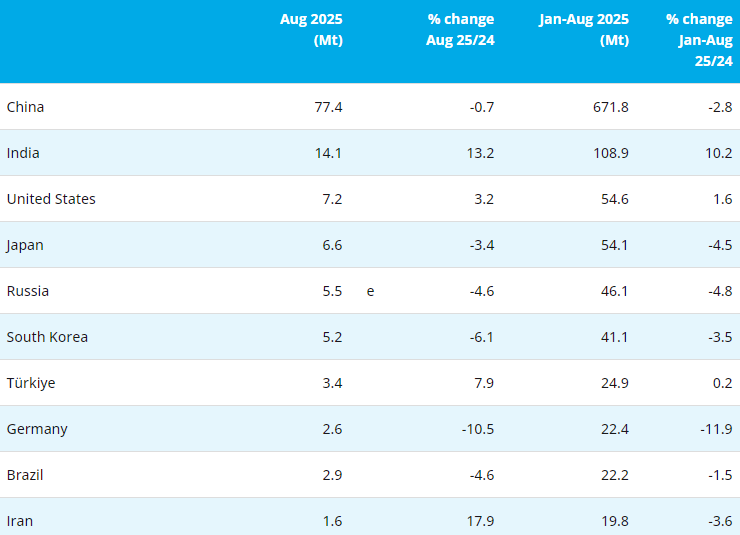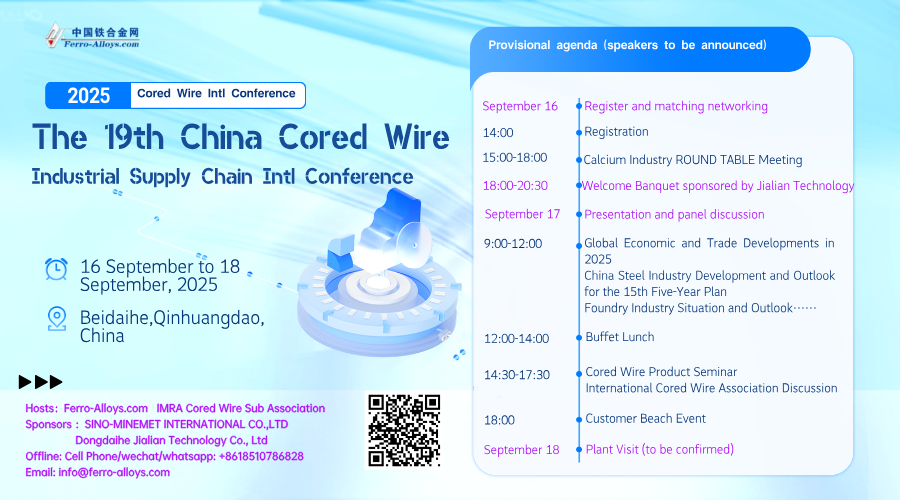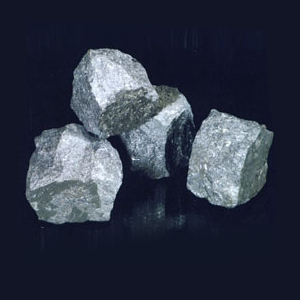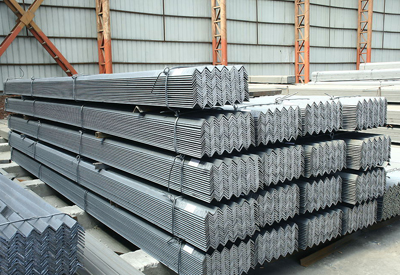Chinese antimony producers claim that current spot prices are below their production costs. Even so, European traders continue to have antimony to sell at $10,000-10,200 per mt, and US traders admit that the next deal they conclude most likely will be under $4.70 per lb.Major Chinese antimony smelters have announced maintenance shutdowns even though market sources believe the production halts have more to do with stemming the slide in spot metal prices than with actual repair activities. China’s biggest smelter, Hsikwangshan, is reported to have closed its antimony trioxide production, and it will not reopen for three months.
Minmetals reportedly is set to close more smelters operated by its subsidiaries. In addition, Minmetals is believed to be stockpiling metal to shore up the market. It bought 1,000 mt of trioxide from Hsikwangshan in March and purchased another 1,000 mt in May.
Weak physical demand has outweighed the impact of shutdowns, stockpiling and tight antimony ore supply in China. Antimony metal prices within China have softened to $10,458-10,784 per mt, VAT included. Export prices are in a range of $11,000-11,500 per mt, f.o.b. through legal trade, while smuggled material is available at around $10,000 per mt.
China exported a total of 1,003 mt of antimony metal in the first four months of 2013, vs. 814 mt in the same period of 2012. Exports were 301 mt (275 mt) to the US; 290 mt (98 mt) to Rotterdam; 140 mt (40 mt) to Hong Kong; 60 mt (140 mt) to Japan; 60 mt (60 mt) to South Korea and 60 mt (0) to Thailand.
Bismuth prices narrowed to $8.50-8.60 per lb compared to $8.50-8.65 per lb, on moderate activity. Selenium prices fell to $29-31 per lb compared to $31-33, with the bottom of the range representing large volume sales.
Western indium prices fell to $520-540 per kg compared to $550-560. Suppliers said that lowering their offer prices was not attracting business because buyers are convinced there is plenty of ingot available.
Chinese indium prices increased again last week, pushed up by speculative buying. Spot prices firmed to 3,800-3,850 yuan ($621-629) per kg, VAT included, compared with 3,700-3,770 yuan per kg. A trader in Hunan province sold 300 kg at 3,800 yuan ($621) per kg, while a producer closed a deal for 1 mt of metal also at 3,800 yuan per kg. A few deals reportedly were done at 3,850 yuan ($629) per kg, sources said.
Crude indium continues to be tight because more plants in southern China have been closed due to environmental violations. High domestic prices have put a crimp on Chinese exports. In the first four months, Chinese exports totaled only 1,023 kg, with 1,008 kg destined for the US.
Japan’s indium imports rose 58% in April to 13,534 kg compared to 8,574 kg in April 2012. Imports were (with April 2012 in parentheses): Korea, 7,103 kg (4,550 kg); Taiwan, 2,899 kg (225 kg); Canada, 1,506 kg (1,853 kg); Peru, 634 kg (650 kg); the UK, 600 kg (100 kg); China, zero (60 kg). April imports were slightly lower than imports of 13,636 kg in March 2013.
The average c.i.f. import price in April was ¥50,060 ($521) per kg from the entire world. The price from Korea was ¥51,359 ($535); Taiwan, ¥47,724 ($497); Canada; ¥49,331 ($514); Peru; ¥50,885 ($530), and UK, ¥52,343 ($545).
Japan’s indium imports for the first four months rose 27% to 60,579 kg compared to 47,730 kg in the same 2012 period. Imports through April were: Korea, 35,013 kg, up 54% from 22,761 kg; Canada 8,802 kg, up 18% from 7,470 kg; Taiwan, 6,824 kg, up from 3,205 kg; US, 4,657 kg, down from 7,720 kg; Peru, 2,421 kg, down 19% from 3,007 kg; Laos, 1,139 kg, almost unchanged from 1,133 kg; UK 1,099 kg, up from 512 kg and China, 150 kg, down from 1,474 kg.
Copyright © 2013 Ferro-Alloys.Com. All Rights Reserved. Without permission, any unit and individual shall not copy or reprint!
- [Editor:editor]



 Save
Save Print
Print Daily News
Daily News Research
Research Magazine
Magazine Company Database
Company Database Customized Database
Customized Database Conferences
Conferences Advertisement
Advertisement Trade
Trade









 Online inquiry
Online inquiry Contact
Contact

Tell Us What You Think